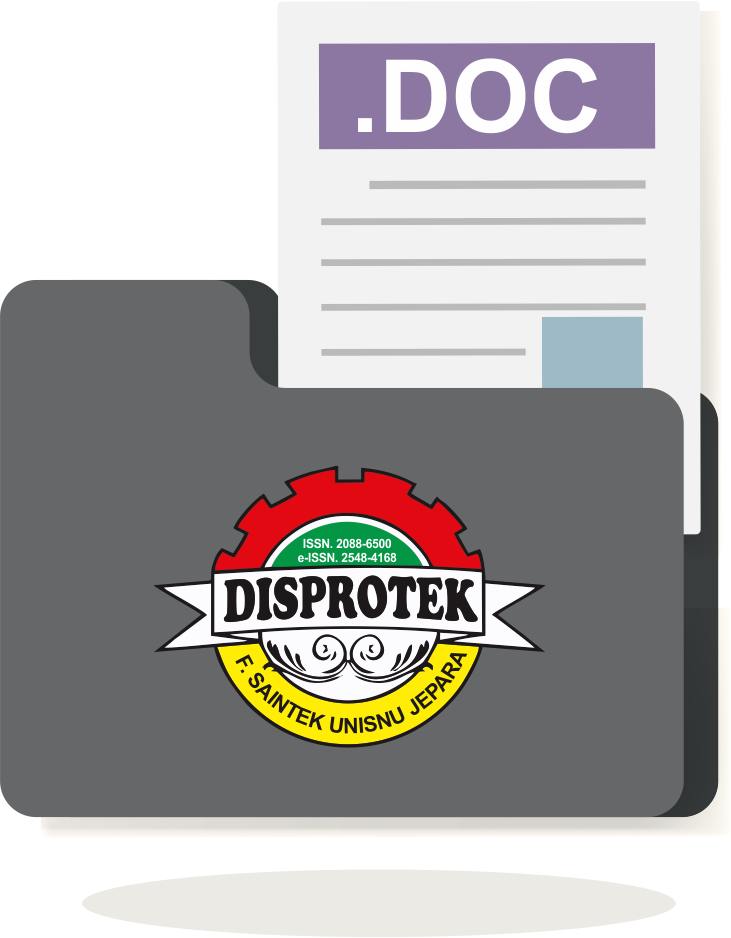PERANCANGAN MEDIA BELAJAR ANTROPOMETRI BERBASIS AUGMENTED REALITY
Abstract
Keywords
Full Text:
PDFReferences
Y. Kaya, “The Cognitive Perspective on Learning: Its Theoretical Underpinnings and Implications for Classroom Practices”. The Clearing House 84(5): 204-212, 2011.
W.W. Lee., and D.L. Owens, “Multimedia based instructional design”, (2th ed.), San Francisco: Pfeiffer, 2004.
P.S Dunston., X. Wang., M. Billinghusrt, M. and B. Hampson , “Mixed Reality Benefits For Design Perception”, Proceedings of 19th international symposium on automation and robotics construction, pp. 191-196, 2002.
M. Thees., S. Kapp, M. P. Strzys, F. Beil, P. Lukowicz, J. Kuhn, “Effects of augmented reality on learning and cognitive load in university physics laboratory courses. Computer in human behavior 108 (106316), 2020.
P.S Dunston., X. Wang., M. Billinghusrt, M. and B. Hampson , “Mixed Reality Benefits For Design Perception”, Proceedings of 19th international symposium on automation and robotics construction, pp. 191-196, 2002.
E. Uva (a), M. Fiorentino (a), G. Monno (a). (2011). Augmented reality integration in Product Development. Proceedings of the IMProVe 2011 International conference on Innovative Methods in Product Design June 15th – 17th, 2011, Venice, Italy, 2011.
A Nehlig,., “Is Caffeine a Cognitive Enhancer?”, Journal of Alzheimer Disease 20, pp. S85-S94, 2010.
N. Bostrom., and A. Sandberg, “Cognitive Enhancements: Methods, Ethics, Regulatory Challenges”, Sci Eng Ethics, 15, pp. 311-341, 2009.
B. M. Pulat, “ Fundamental of Industrial Ergonomics”, USA:Waveland Press inc 1997.
T.A. Coen,., “ Bahasa dalam User Interface”, 2002.
Mantasia., and H. Jaya , “Pengembangan Teknologi Augmented reality Sebagai Penguatan Dan Penunjang Metode Pembelajaran Di SMK Untuk Implementasi Kurikulum 2013”, Jurnal Pendidikan Vokasi Volume 6, No 3, November 2016 (281-291), 2016.
M. Thees., S. Kapp, M. P. Strzys, F. Beil, P. Lukowicz, J. Kuhn, “Effects of augmented reality on learning and cognitive load in university physics laboratory courses. Computer in human behavior 108 (106316), 2020.
M. Sun, X. Wu, Z. Fan,X.N. n Dong. “Augmented reality Based Educational Design for Children”, International Journal of Emerging Technologies in Learning (iJET). Vol 14, No 03, 2019.
W.W. Lee., and D.L. Owens, “Multimedia based instructional design”, (2th ed.), San Francisco: Pfeiffer, 2004.
DOI: https://doi.org/10.34001/jdpt.v14i1.4456
Article Metrics

This work is licensed under a Creative Commons Attribution-ShareAlike 4.0 International License.
Disprotek Indexed by:
DISPROTEK: Journal of Informatics Engineering, Information Systems, Electrical Engineering, Industrial Engineering, Civil Engineering, and Aquaculture is licensed under a Creative Commons Attribution-ShareAlike 4.0 International License.

_001.png)




















